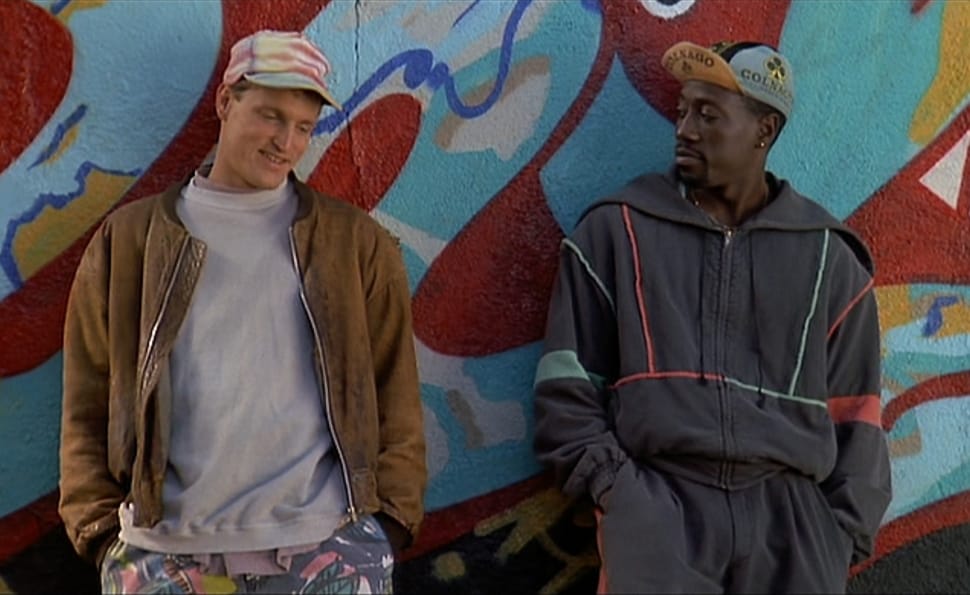SLAM DUNK

Sidney Deane: [to Billy] Look man, you can listen to Jimi but you can't hear him. There's a difference man. Just because you're listening to him doesn't mean you're hearing him.
One thing the late Stanley Kubrick and I share is our love of Ron Shelton’s White Men Can’t Jump. It didn’t surprise me to learn that cinema’s greatest maestro was a huge fan of the 1992 basketball buddy movie; I’ve been a loyal advocate ever since it first came out.
I remember all too well the afternoon screening I attended back in the early ’90s, dressed in similarly dishevelled fashion to Woody Harrelson’s Billy Hoyle. I’d played basketball earlier that day with a couple of my fellow teenage mates, floating a couple of three-pointers clean through the net and making several feeble attempts at slam dunks — despite the inexcusable advantage of being over six feet tall. One thing was for sure: this white “man” (boy, really) couldn’t jump.
Right from the start, Shelton evokes — to impressive effect — that familiar sense of hazy heat and tarmac, the anticipation of competition on a basketball court (though it could just as easily be a cricket field, tennis court, or football pitch), blending perfectly with the swelter of summer. When Harrelson rests his head on a basketball while lying on an empty court, gazing up at an empty net, it’s as if he’s grounding himself — like a Buddha — in the very place where he will soon display his sporting prowess.
But perhaps more important than its delicious evocation of street-sport summer is its unapologetic depiction of race. I would go so far as to say the film marked a high point of racial harmony and understanding in popular culture — a buddy movie in which the goofy white guy, Billy Hoyle (Harrelson), and the wise-cracking Black guy, Sidney Deane (Wesley Snipes), join forces to hustle money out of rival players on the courts of Los Angeles. This isn’t wishy-washy multiculturalism; it’s pragmatic race realism. Differences are mocked but ultimately accepted, and through that honesty comes the glue that binds two men from different worlds.
Perhaps only the subtle double act of Rod Steiger and Sidney Poitier in In the Heat of the Night captures a similar spirit — one where mutual respect is born not from pretending to be rainbow “friends of Benetton,” but from being themselves, warts and all. 80s film like 48 Hrs., Beverly Hills Cop, and Trading Places tapped into a similar vein. But that level of maturity in characterisation and thematic exploration has been mostly absent from Hollywood for the past decade or more, as race politics has grown increasingly binary, with little grey area for nuance.
Yep, those smart-ass, worldly days of the ’90s are gone, sacrificed on the altar of progressivism — which, ironically, has been regressive in promoting hyper-racialised language and divisions in our societies. But for a while back then, we had a laugh, the chemistry was real, and the vibe was good.
And it would be remiss of me not to mention the film’s most unexpected grace note: the Venice Street Boys, harmonising Mood Indigo and Just a Closer Walk With Thee in glorious a cappella. Like the film itself, it hums with easy charm and unforced harmony.